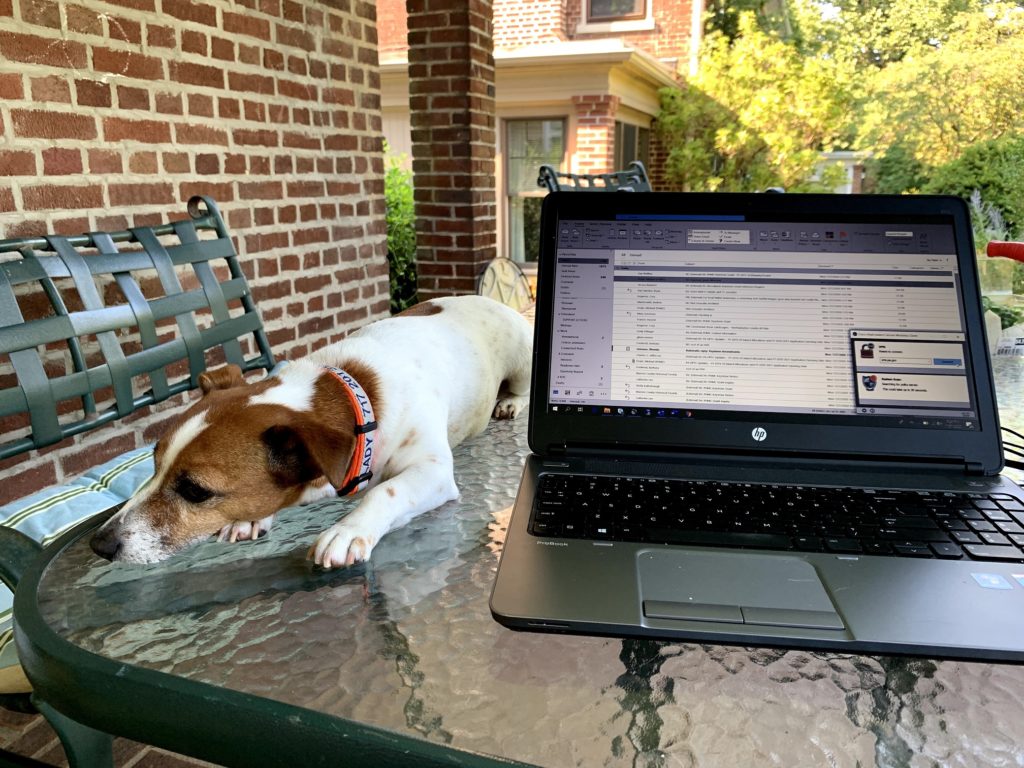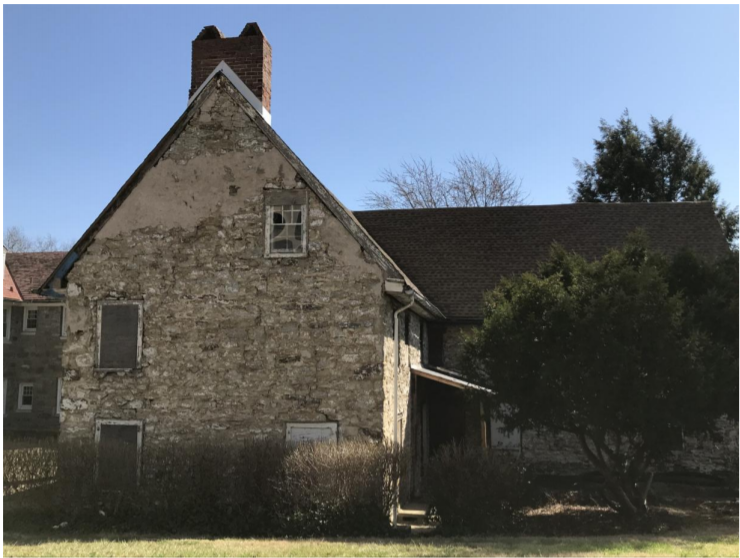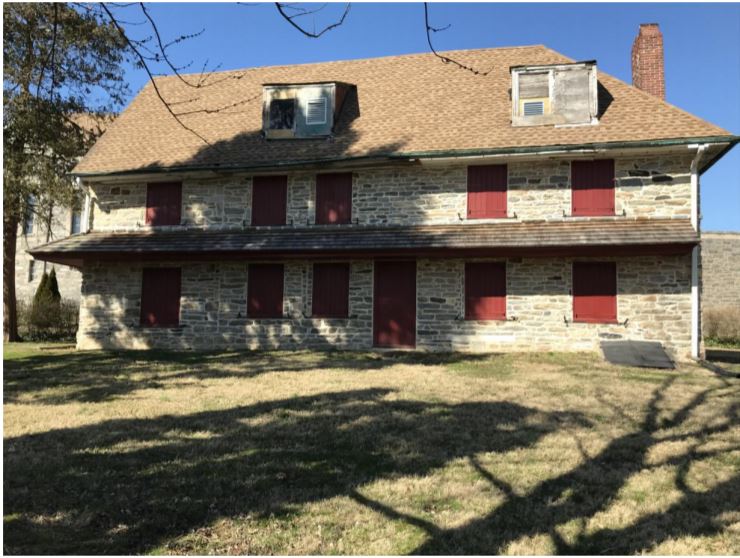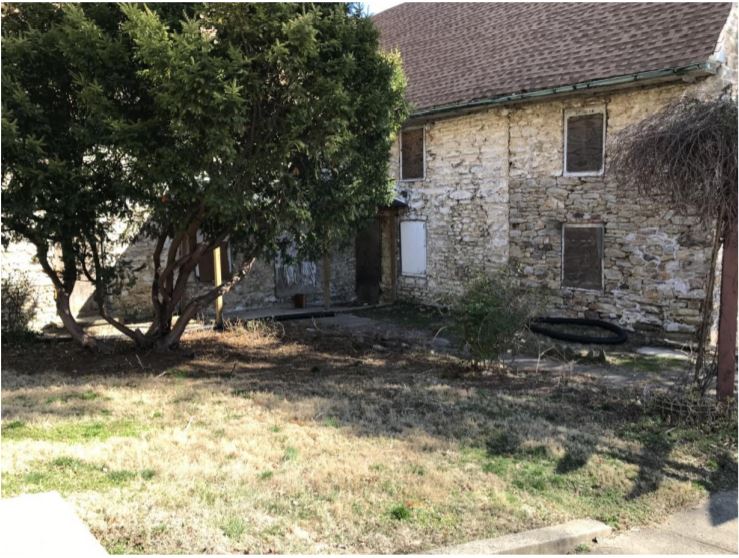I’ve spent a good bit of my time lately enjoying virtual content from our partner cultural and heritage sites around Pennsylvania.
Since many of them have reduced hours and may only accommodate a few visitors at any given time, it is great to have the opportunity to enjoy these places virtually – with my dog at my side. Frankly, Lady Catherine de Bourgh doesn’t seem to share my interest as much as she enjoys snuggling next to me.

Many of our grantees share their newly developed content with me or are kind enough to send invitations to their zoom meetings. It is wonderful to see the innovative ways that our partners engage with their stakeholders during the pandemic.
I’ve learned about a diverse array of topics from the restoration of a 18th kitchen hearth at Delaware County’s Newlin Grist Mill Complex to Maxo Vanka’s early 20th century murals at St. Nicholas Church in Millvale, Allegheny County.
Hopefully all this newfound knowledge will give me an edge in the PaSHPO’s annual Jeopardy-styled game which should happen virtually this year too. I’m hoping for a category dedicated to August Wilson’s portfolio of work – that should give me an advantage over my colleagues!
Keystone Grants support understanding of Pennsylvania’s Cultural sites
The Pennsylvania Historical and Museum Commission recently announced new recipients of the Keystone Historic Preservation Grant program. You can see the full list of the 2019-2020 recipients here on the PHMC website: https://www.media.pa.gov/pages/phmc-details.aspx?newsid=374.
With the announcement of this year’s Keystone Grant recipients, I have additional organizations to follow on social media and new facets of Pennsylvania history about which to learn.
What is particularly interesting is how the organizations leverage the grant funding to study their own sites in hopes of sharing the expanded content with the public.
One area that was of particular interest was a fascinating c. 1684 stone house in Upper Darby Township, Delaware County. I’ve visited this section of Pennsylvania many times and am fascinated by the pockets of early Colonial Pennsylvania surrounded by the later 20th century transit-oriented development.
Sellers Hall
Obscured by this suburban development, Sellers Hall was a relatively unknown historic resource in the community until recently.

St. Alice Roman Catholic parish used the building as rectory and library for much of its modern history. But its roots were that of a simple and typical south eastern Pennsylvania four-room dwelling. Occupied for 180 years by the Sellers family, the vernacular farmhouse was part of a complex of domestic, agricultural and early industrial buildings that included outbuildings, farm buildings, tenant houses, mills and landscape features such as stone retaining walls. You can see some historic photos here.
By the early 20th century, the former estate was subdivided into dense residential neighborhoods with commercial and institutional properties nearby.
The Friends of Sellers Hall (FOSH) incorporated as a non-profit organization in 2009 to work with the Archdiocese of Philadelphia to ensure the property’s long-term preservation.
Over the past decade, the organization’s research, planning and restoration efforts commenced in hopes that the building could be open for interpretation and community use.
In 2010 and 2011, the Graduate Program in Historic Preservation at the University of Pennsylvania under the direction of architect John Milner began an extensive archival research and architectural investigation. The developmental history of the building and surrounding property was documented in a preliminary Historic Structures Report.

Friends of Sellers Hall eventually purchased the property outright in 2015. Sellers Hall was listed in the National Register of Historic Places in 2018. The nomination form is found in the PASHPO records here: https://gis.penndot.gov/CRGISAttachments/SiteResource/PA_DelawareCo_SellersHall_nomination.pdf
Archaeological Investigation To Commence
After a series of stabilization efforts secured the building envelope, Friends of Sellers Hall applied for a Keystone Grant in this most recent round to begin a Phase I archaeological investigation.
The project will begin with ground penetrating radar investigations of all accessible parts of the site to assess the depth of historic fill and to determine the location of previously demolished outbuildings and other buried historic features.
Archaeological fieldwork will include shovel testing and test unit excavation to provide more detailed information about the site soil and evidence of buried cultural features and/or artifacts. Their consultant, AECOM, expects that 500 artifacts will be recovered, processed and analyzed whose results will direct potential future archaeological investigations.

Integrated Planning and Public Input
The most interesting part of the project will be the public programming associated with the archaeology project, giving the community not only a chance to observe and participate, but also to shape how the building will be used by the community in the future.
FOSH will also take the opportunity to solicit stakeholder feedback regarding ideas for the future use and interpretation of the site how best to share that history in new and innovative ways.
While the history of the site includes the significant role of the Sellers family in early industry, science and engineering in 17th-19th centuries, Sellers Hall is in the primary stages of planning and stabilization toward a goal of public interpretation and community use.
The immediate Upper Darby community is extremely diverse, with over 30% of residents are foreign born immigrants. These demographics challenge the traditional interpretive goals of a historic site and make strategic planning with sensitivity to the needs of the community. The organization sees an opportunity to connect today’s immigrant population in Upper Darby with the aspirations and ingenuity of early Pennsylvania settlers and the waves of immigrants who landed in Philadelphia in the 18th and 19th centuries.
The Friends of Sellers Hall project was one of 52 projects awarded funding through the Keystone Historic Preservation Grant program by the PHMC Commissioners in September. Congratulations to all the recipients!
“Pennsylvania History to Go” Initiative
Also stay tuned to learn more about PHMC’s own efforts to develop digital learning resources. PHMC was awarded $246,500 from the Institute for Museum and Library Services (IMLS) to design, produce and deliver new digital learning resources to support individuals and groups affected by COVID-19 in Pennsylvania.
Through the “Pennsylvania History to Go” initiative, PHMC will film, edit, and produce virtual tours of museums on the Pennsylvania Trails of History and create infrastructure to produce live digital programs. Check out the PHMC website to learn more about this exciting initiative. https://www.media.pa.gov/Pages/PHMC-Details.aspx?newsid=376
Thanks for wide ranging updates. I’ve been able to visit more NPS, PA and county parks for outdoor and historic activity. Includes Hopewell Furnace, Harpers Ferry, Catoctin, Lockridge Furnace and many more.